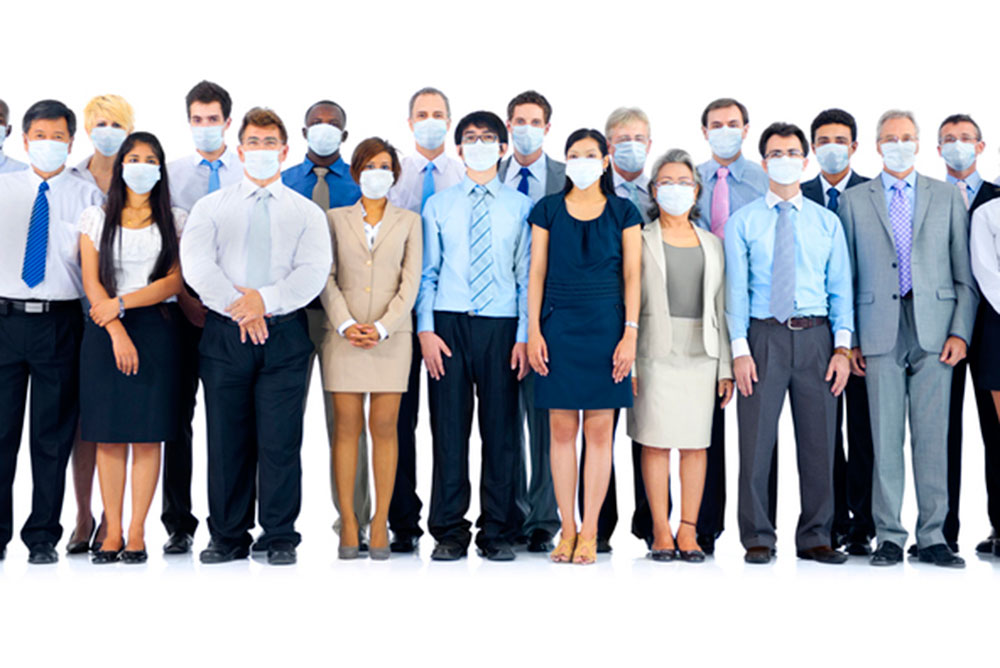
iStock
“SOCIAL DISTANCING”— keeping at least six feet away from other people—is the advice for those over 60 and those with severe, chronic medical conditions, to minimize risk from the current coronavirus.
On March 6 the CDC advised that these two groups “stay home as much as possible”—based on data indicating that older people are twice as likely to become seriously ill from the virus.
“I think clearly the time has come to take these steps,” said University of Minnesota infectious disease specialist Michael Osterholm, a frequent advisor to the federal government on public health issues.
Avoid travel by airplane, going to movie theaters, attending family events, shopping at crowded malls and going to religious services, suggests Vanderbilt University Preventive Medicine Director William Schaffner, longtime advisor to the CDC. For religious services, Schaffner says, “Don’t go. Be reverent at home.”
As of March 8, recent cases included an Uber driver in Queens, New York, and an attendee at CPAC (Conservative Political Action Conference), which President Trump and Vice President Pence attended but were never in the same room as that individual. Locally, Montgomery County, Maryland, has reported five confirmed cases of coronavirus, with two in D.C. and three in Virginia—based on limited testing.
Insufficient paid sick leave may be among the most intractable obstacles to preventing contagion, according to past CDC head Richard Besser, among other “failures of public policy and imagination” responsible for the millions of Americans living with inadequate or no health insurance or who otherwise have no easy access to healthcare.
For many travelers, the greatest worries about the virus concern the inconveniences of getting stuck for two to three weeks in quarantine and the heightened risk of infection among passengers in confined spaces, particularly on airplanes. Anyone purchasing tickets now should look for “cancel-for-any-reason” trip insurance.
Some airlines have canceled flights to and from China, Hong Kong, South Korea and Milan until late April or early May. Many offer relaxed cancellation policies, and some sent out notices about additional hygiene precautions on aircraft using HEPA filters and additional disinfectants and cleaners.
“When we are advised by the CDC of a person who has traveled on board and is potentially exhibiting corona virus symptoms, that aircraft is taken out of service,” according to United’s email to passengers. United is offering free exchange over the next 12 months for any ticket purchased between now and March 31.
The most important, persistent questions concern the total number of people infected with the virus—because if, as suspected, that number ends up at two to ten times the current published total, just above 100,000, rates of serious illness and death will plummet. On the other hand, the number of deaths now attributed to the virus might be low as well.

Don’t shake hands. Say “Namaste” instead. / Photo/ iStock
In addition, the current death rate of about 1% of symptomatic cases is unevenly distributed—maybe as low as .1% in younger groups, with rates for those over 60 climbing to 5 or 10%. Regardless of the numbers, the virus has already killed thousands of people.
In the U.S., lack of test kits along with overly strict limits on who gets tested have been obstacles to accurate accounting. When the CDC was unwilling to reveal total numbers of people already tested, The Atlantic conducted interviews with public health officials and surveys of local data across the country that as of March 6 led to a paltry total of 1,895 tests —of which about 10% tested positive.
Even with ramped-up production, only about several thousand test kits will be available each day—in contrast to the million-plus kits promised by the FDA and the Vice President, according to The Atlantic: “The figures we gathered suggest that the American response to the coronavirus…has been shockingly sluggish, especially compared with that of other developed countries.”

The CDC has encouraged “jazz hands” greetings (pictured above) in the age of corona virus. / Photo/ iStock
In the U.S, inadequate testing for the coronavirus also stands in sharp contrast to past responses to new viruses, such as the 2009-10 H1N1 pandemic virus—also called “swine flu,” similar to the virus responsible for the 1918-1920 Spanish flu—when the CDC organized production of huge quantities of test kits around the country. Beginning in April 2009, the H1N1 virus affected an estimated 60.8 million people and caused 12,469 deaths in the U.S.
While warm weather may lead to the waning of this coronavirus—typical behavior for seasonal flu—the H1N1 arose in springtime and continued through the summer. Also because the current coronavirus is new, with no existing immunity in the populations, experts say its behavior is impossible to predict.
Healthy greetings—rather than handshakes—include fist bumps and the customary Indian greeting, “Namaste.” The CDC has encouraged jazz hands: either with extended arms or hands along the sides of the face, palms facing the greetee, fingers splayed, and hands waving sideways and/or fingers wiggling.
—Mary Carpenter
Well-Being Editor Mary Carpenter is keeping her eye on the corona virus for us. For more of her posts, click here.

Frightening indeed.